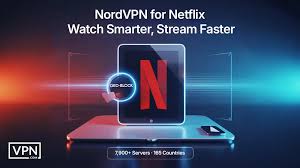In the fast-paced world of digital content, explainer videos have become a staple for businesses and creators looking to convey complex ideas in a simple and engaging manner. These short, informative videos have the power to captivate audiences and drive home key messages, making them invaluable tools for communication and marketing. However, behind every successful explainer video lies a carefully crafted storyboard—a visual roadmap that guides the entire production process and ensures coherence and clarity in the final product. In this article, we’ll explore the art and science of storyboarding and how mastering this skill can elevate your explainer videos to new heights.
Understanding the Fundamentals of Storyboarding:
Before we delve into the intricacies of storyboarding, let’s first understand what it entails. At its core, storyboarding is the process of planning out a video or film shot by shot, using a series of illustrations or images to visualize the sequence of scenes, camera angles, and transitions. Think of it as a blueprint for your video—a roadmap that outlines the visual and narrative elements of your story.
Crafting a Compelling Narrative:
One of the key aspects of effective storytelling is crafting a compelling narrative that resonates with your audience. Whether you’re explaining a complex concept, showcasing a product, or sharing a testimonial, your video needs to have a clear and coherent storyline that captures the viewer’s attention from start to finish. This is where storyboarding comes into play.
By sketching out each scene in advance, you can experiment with different narrative structures, pacing techniques, and visual elements to find the most engaging approach for your video. Start by outlining the main points you want to convey and organizing them into a logical sequence. Then, map out the flow of your story, paying attention to transitions between scenes and the overall arc of your narrative.
Visualizing Your Ideas:
Once you have a solid narrative foundation, it’s time to bring your story to life through visual storytelling. This is where the artistry of storyboarding truly shines, allowing you to experiment with composition, framing, and camera movement to create dynamic and engaging visuals. Start by sketching rough thumbnails of each shot, focusing on capturing the essence of the scene without getting bogged down in details.
As you refine your storyboard, pay attention to visual cues such as color, typography, and imagery. These elements can help reinforce your message and create a cohesive visual identity for your video. Experiment with different styles and techniques to find the one that best fits your brand and resonates with your audience.
Optimizing for Engagement:
In addition to creating visually compelling content, it’s important to optimize your explainer videos for maximum engagement. This involves not only crafting a compelling narrative and stunning visuals but also ensuring that your video is easily discoverable and shareable online. Use relevant keywords in your title, description, and tags to improve your video’s visibility on search engines and social media platforms. Encourage viewers to like, comment, and share your video to increase its reach and impact.
Conclusion:
Storyboarding is both an art and a science—a creative process that requires careful planning, experimentation, and attention to detail. By mastering the fundamentals of storyboarding, you can elevate your explainer videos to new heights, captivating audiences with compelling narratives and engaging visuals. So whether you’re a seasoned filmmaker or a novice creator, remember to harness the power of storyboarding to craft videos that inform, inspire, and delight your viewers.



































